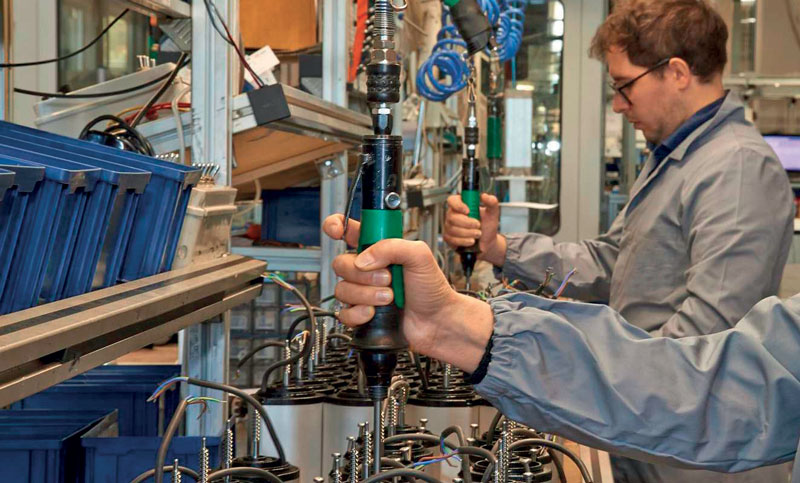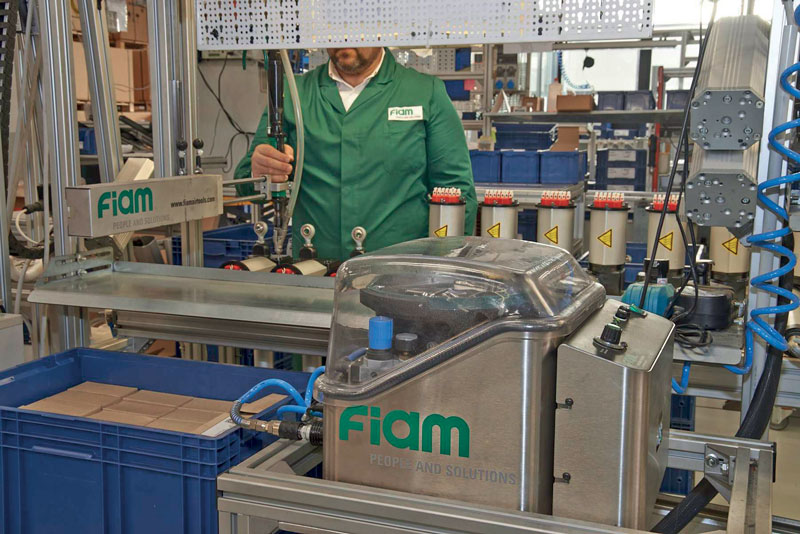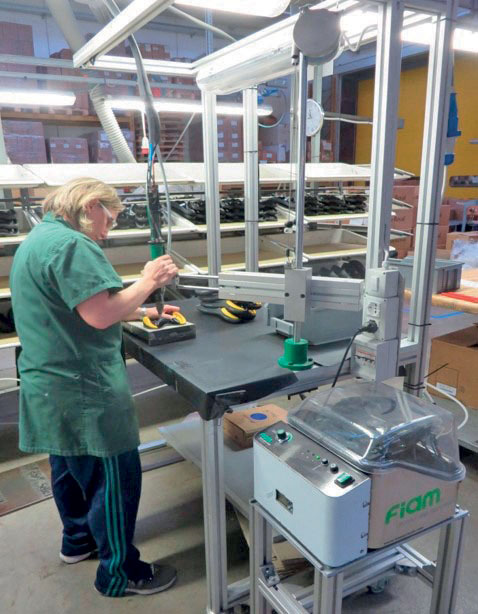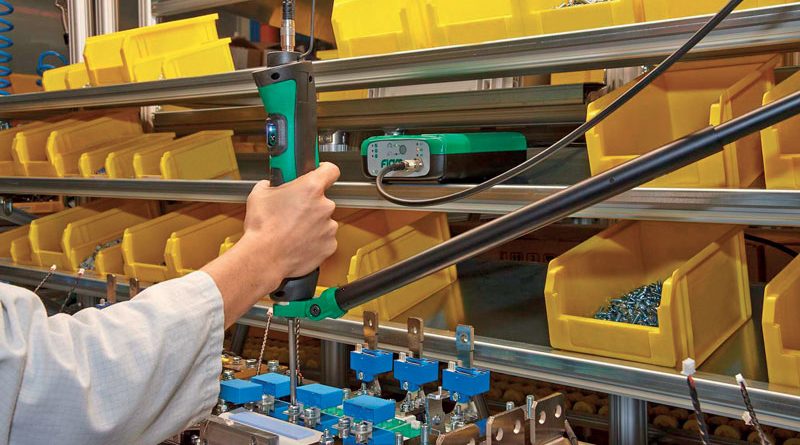The operator is the heart of screw tightening
How important is ergonomics for operators and production? What advantages do monitoring systems bring? Are we heading towards cybernetic screw tightening 5.0? These questions were answered by Nicola Bacchetta, Sales and Marketing Director of FIAM, during the conversation which took place during Assembly Week, as he tolds us about the evolution of joining techniques and industrial screw tightening.
FIAM can look back on a company history spanning more than 70 years. Can you briefly describe the values and mission which have guided and continue to guide
the company?
FIAM is a company, founded in 1949, which is a reference point for the world of industrial screw tightening and competes every day with multinationals in the sector. We design and manufacture in Vicenza, therefore entirely in Italy, electrical, electronic and pneumatic screw tightening solutions for the most diverse assembly needs, both manual and automatic which can be integrated in environments where, in addition to interconnection, a high level of performance and reliability is required. Our main customers are in the MVI (Motor Vehicle Industry) and automotive TIER1 sectors, which are definitely a driver for technological innovation. But that is not all, we also deal with household, general industry, aerospace and other sectors. The focus of all our solutions is on improving process efficiency, finished product quality, maintenance costs and ergonomics. In addition to assembly, Fiam is a specialist in the design and production of pneumatic motors to be integrated on machines or inside tools in numerous applications and which today move over 1.5 million machines worldwide.
The five values on which the company is founded are: honesty, tenacity, reliability, professionalism and flexibility. Continuing to be recognised as an excellent Business Partner in the world of industry is the vision that guides us; developing effective solutions in the field of screw tightening systems and automation of production processes is our daily mission. The people who work in Fiam are our strength, as the pay-off strongly states.

One of the most important requirements for your customers is the high quality of the finished product, and in this sense screw tightening plays a fundamental role, through in-process and post-process controls. What technologies does FIAM deploy? Do electronic solutions make the difference?
Screw tightening is actually a very critical process which affects precisely the quality of the product: imagine what would happen, for example, if the door of the oven at home came off due to incorrect or missing screw connections. The screw tightening process has also taken centre stage again in assembly processes, because it is basically reversible and therefore allows a subsequent disassembly phase, unlike other technologies such as welding, gluing, riveting, etc. This meets the necessary and increasing attention towards the repair and reuse/recycling of capital goods (for instance, household appliances).
In the modern manufacturing world, the quest for efficiency and therefore waste reduction leads companies to pay increasing attention and analyse in greater detail the production processes. When we talk about assembly phases and therefore about screw tightening, we can summarise in five macro-families the needs which customers demand from us every day: to increase the efficiency of the screw tightening processes, eliminating waste and costs; to increase the quality of the finished product; to reduce the time taken to go through the processes, therefore increasing production speed; to increase operational flexibility, reduce the operational lead time due to the extreme variability of the market and the different flows; to bring people/operators and their distinctive skills back to the centre.
The three main areas of intervention are, on one hand, intercepting errors (avoiding them or making them evident) during the process (in process), precisely to avoid having to carry out subsequent controls (post process) for which Lean Manufacturing would speak of an operation with no added value for the customer. Some post-process controls cannot be eliminated, but certainly the trend is to carry out the greatest number of checks in real time during the process, for example verifying the tightening torque, or that all the screws have been tightened and perhaps even in the correct sequence intended as the physical position on the component. Electronic screw tightening solutions show us how these areas turn flexibility into a fundamental added value, in addition to the possibility of checking torque, angle and screw tightening duration in real time. Furthermore, the possibility of communicating with the outside world, receiving instructions and transmitting quantitative and qualitative data (results) accordingly, is fundamental. The world of pneumatic tightening, on the other hand, is able to offer these aids only partially.
To increase the efficiency of screw tightening processes, it is important to eliminate waste and costs. One way to make this possible is to use monitoring and control systems known as “poka yoke”, which FIAM uses a lot. Can you tell us something about this? How much support does it provide to the operator?
Poka Yoke is the combination of the Japanese words Poka (error due to carelessness) and Yokeru (to avoid). In the beginning, such devices were simple mechanical devices installed on assembly lines to avoid misplacement or detect missing parts. The basic principle is to intercept a defect before it becomes an irreparable scrap, but one of the most important effects is to free operators from the constraint of manning the running machine. In this way, operators are less fatigued by repetitive and unergonomic operations, thus limiting the risk of error caused by distraction or fatigue.
Production tools must always be ‘user friendly’, that is, whether they are electric or electronic, they must incorporate ‘poka yoke’ monitoring and control systems to make ‘human’ errors obvious or to avoid them, meet operators’ needs and support them in assembly operations. And all this is closely linked to some of the principles of lean production, that is, identifying and eliminating non-value-added activities, in order to have efficient assembly processes aligned with the most advanced principles of ergonomics for operators.

Looking again at the figure of the operator, FIAM therefore focuses strongly on ergonomics. Could you tell us what the advantages are for the health and safety of the operators? And what positive effects does this have on production?
The concept of ergonomics is evolving to encompass aspects increasingly related to cognitive and organisational activities, which are the new frontiers for considering work environments as truly healthy. Not just physical factors such as avoiding vibrations and excessive noise, or trying to reduce the weight of tools. Organisational ergonomics refers to all measures aimed at promoting and protecting the physical, social and psychological well-being of workers; cognitive ergonomics, on the other hand, focuses on the application of knowledge relating to human cognitive processes (such as attention, perception, emotions, thought, language and memory) and the process of developing and designing the dynamics of interaction between an operator and an information processing system. If one of the three ergonomics is not safeguarded, production will not be efficient.
To return once again to lean production: production processes involving lean methods belong to companies which look to their future in a “smart” way and therefore adopt smart and ergonomic tools/methods to achieve the unquestionable advantages of a more ergonomic, efficient, interconnected, intelligent factory thanks to better human-machine collaboration. In terms of automation, the first step is semi-automatic screwdrivers, which still require human assistance, but which allow production increases in terms of speed because they make operation extremely fast and completely safe. The next step is more complex automation, ranging from the use of anthropomorphic robots to fully automatic screwing automation. These semi-automatic solutions are represented by screwdrivers which automatically feed the screw, which is shot onto the tightening point, thus saving precious seconds of manual picking up of the screw and relative positioning, which are extremely precious in terms of line cycle times. We are talking about a time saving that often reaches 35% in the operational phases and when, for example, 2,000 pieces per day have to be produced, these numbers are decisive. Not to mention the ergonomic advantages for the operators.

To conclude, may I ask you how the workflow has changed over the years and what hardware and software developments is FIAM pursuing? Are we moving towards a 5.0 screw tightening process?
Increasing operational flexibility is one of the most important aspects of the factory of the future due to the increasingly varied and changing production flows in increasingly evolving markets. There are more and more product and component variants to process in industrial production, and consequently greater complexity in managing production batches; this involves programming production cycles based on different materials and different types of screws to be used, with different functional parameters, over several production shifts. The situations found more and more frequently are: high variability of consumption and high variability of customisation. If I want to increase flexibility in responding to customer needs, even working tools such as screwdrivers must be able to adapt to this request for flexibility by adapting to different production “recipes”.
Products available in different variants need operators who immediately have all the main information available to carry out the assembly work in the best possible way. New technologies offer digital solutions which can support the operator, instruct him on the sequence of operations to be carried out, select the products to be picked: all the main functions of an intelligent and connected workstation.
Perhaps we are indeed moving towards a 5.0 screw tightening, which we could summarise in the synergy and complementarity between the three aspects we saw earlier: interconnectivity, ergonomics for the operator and automation. This mix always puts people at the centre, even when we talk about automation, which is necessary when production rates are too high. Just as cybernetics studies the mechanisms by which humans, animals and machines communicate, interact with and control the external environment, so screw tightening also becomes cybernetic because it interacts with these three areas.

